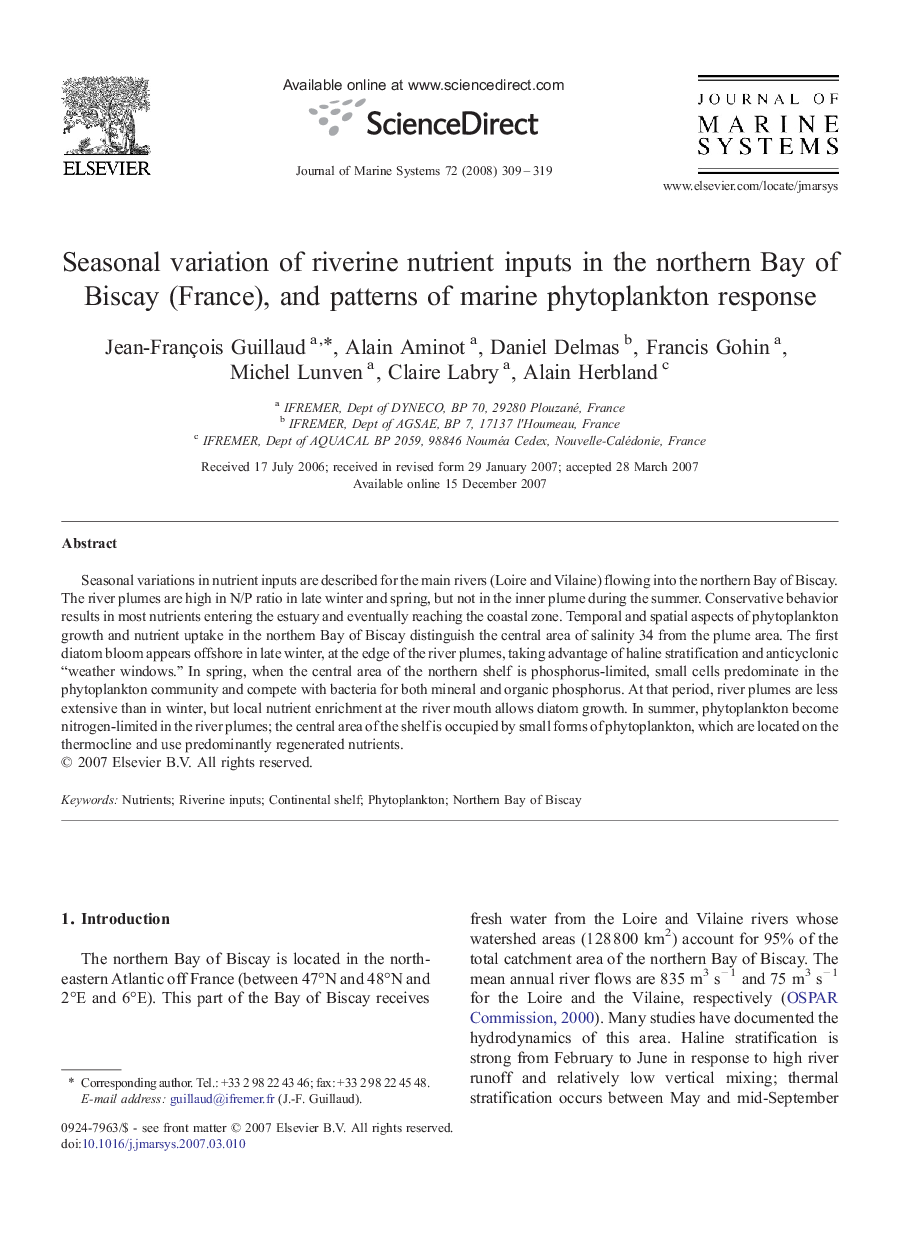| Article ID | Journal | Published Year | Pages | File Type |
|---|---|---|---|---|
| 4548845 | Journal of Marine Systems | 2008 | 11 Pages |
Seasonal variations in nutrient inputs are described for the main rivers (Loire and Vilaine) flowing into the northern Bay of Biscay. The river plumes are high in N/P ratio in late winter and spring, but not in the inner plume during the summer. Conservative behavior results in most nutrients entering the estuary and eventually reaching the coastal zone. Temporal and spatial aspects of phytoplankton growth and nutrient uptake in the northern Bay of Biscay distinguish the central area of salinity 34 from the plume area. The first diatom bloom appears offshore in late winter, at the edge of the river plumes, taking advantage of haline stratification and anticyclonic “weather windows.” In spring, when the central area of the northern shelf is phosphorus-limited, small cells predominate in the phytoplankton community and compete with bacteria for both mineral and organic phosphorus. At that period, river plumes are less extensive than in winter, but local nutrient enrichment at the river mouth allows diatom growth. In summer, phytoplankton become nitrogen-limited in the river plumes; the central area of the shelf is occupied by small forms of phytoplankton, which are located on the thermocline and use predominantly regenerated nutrients.
